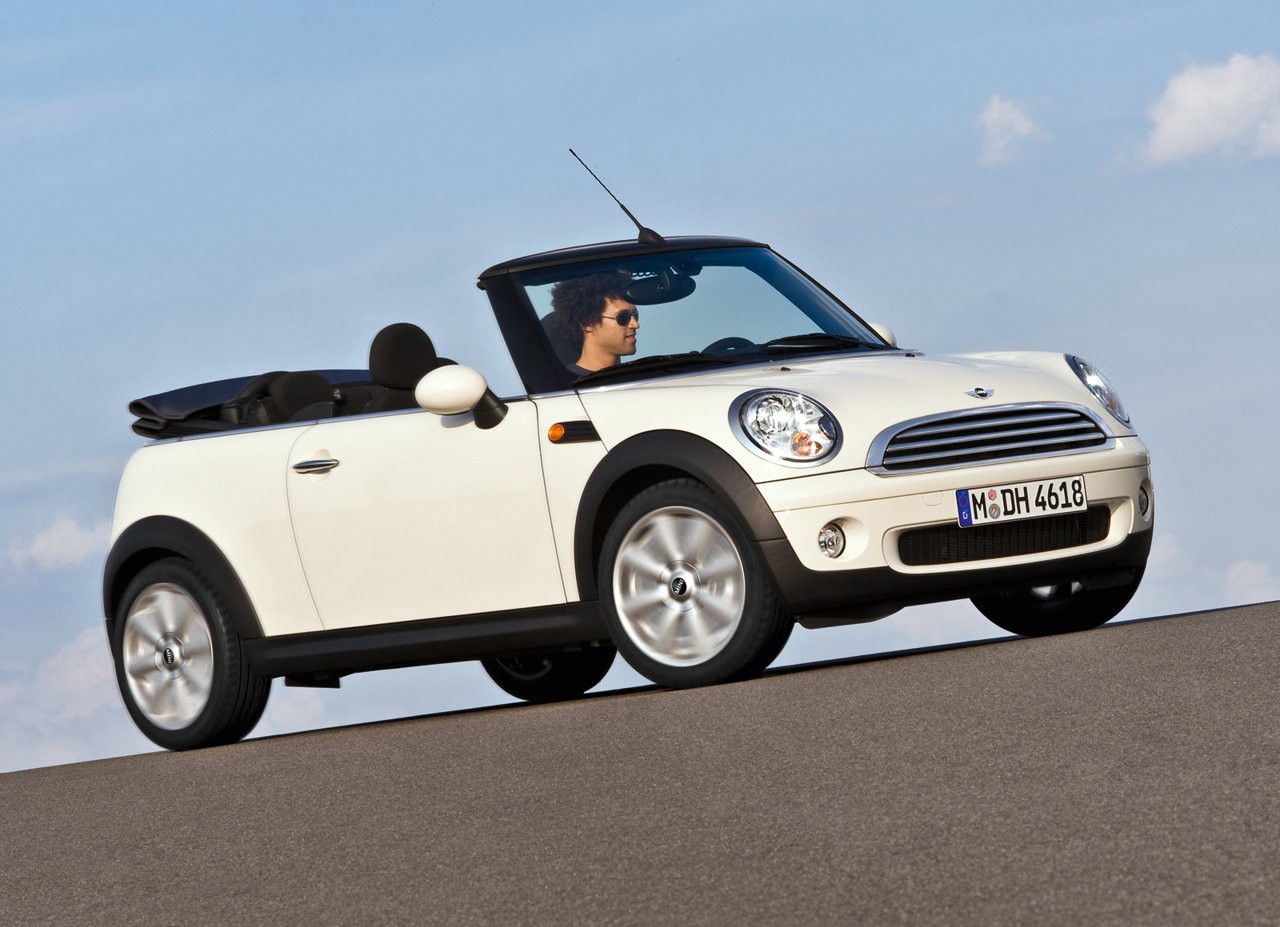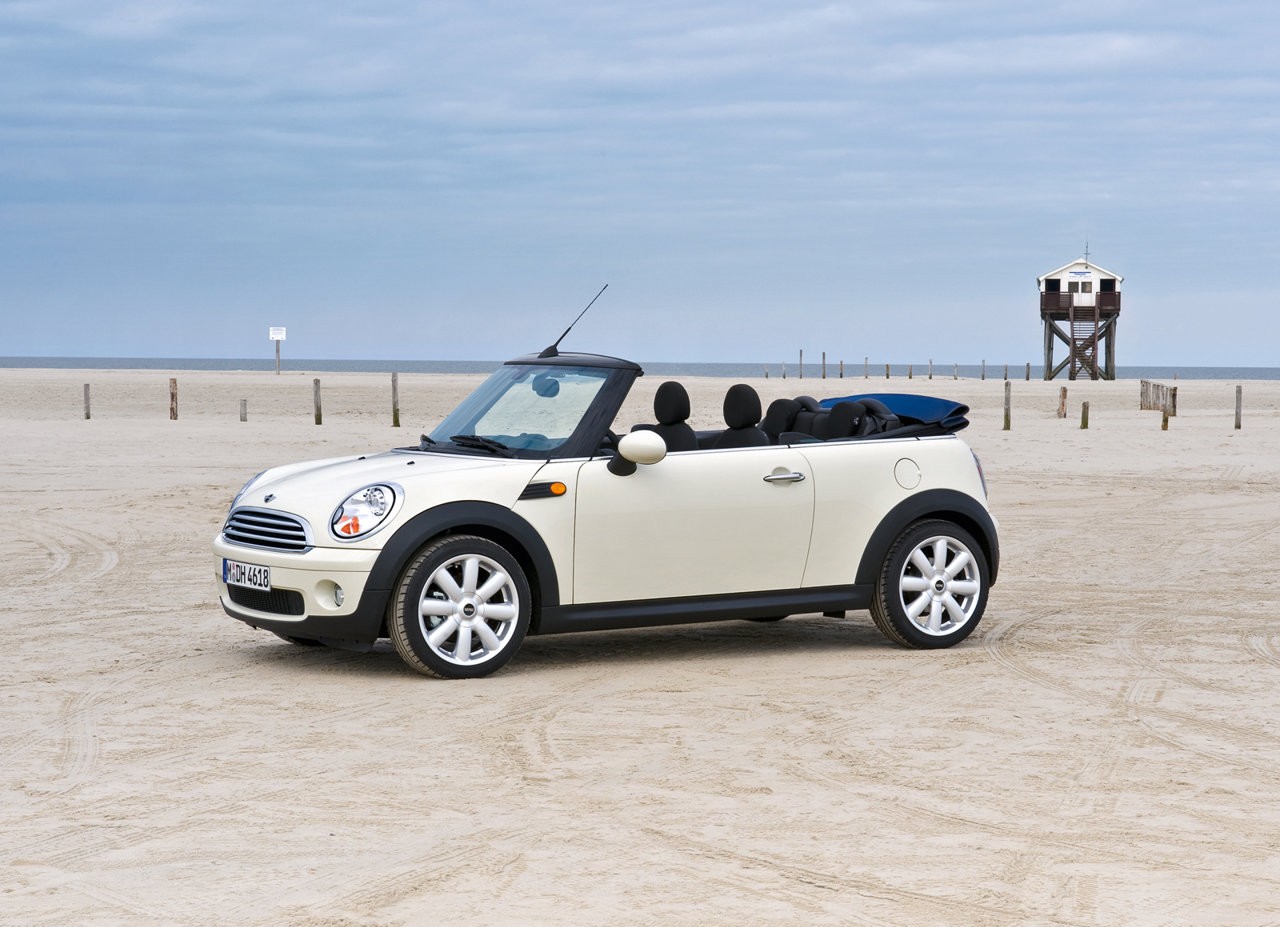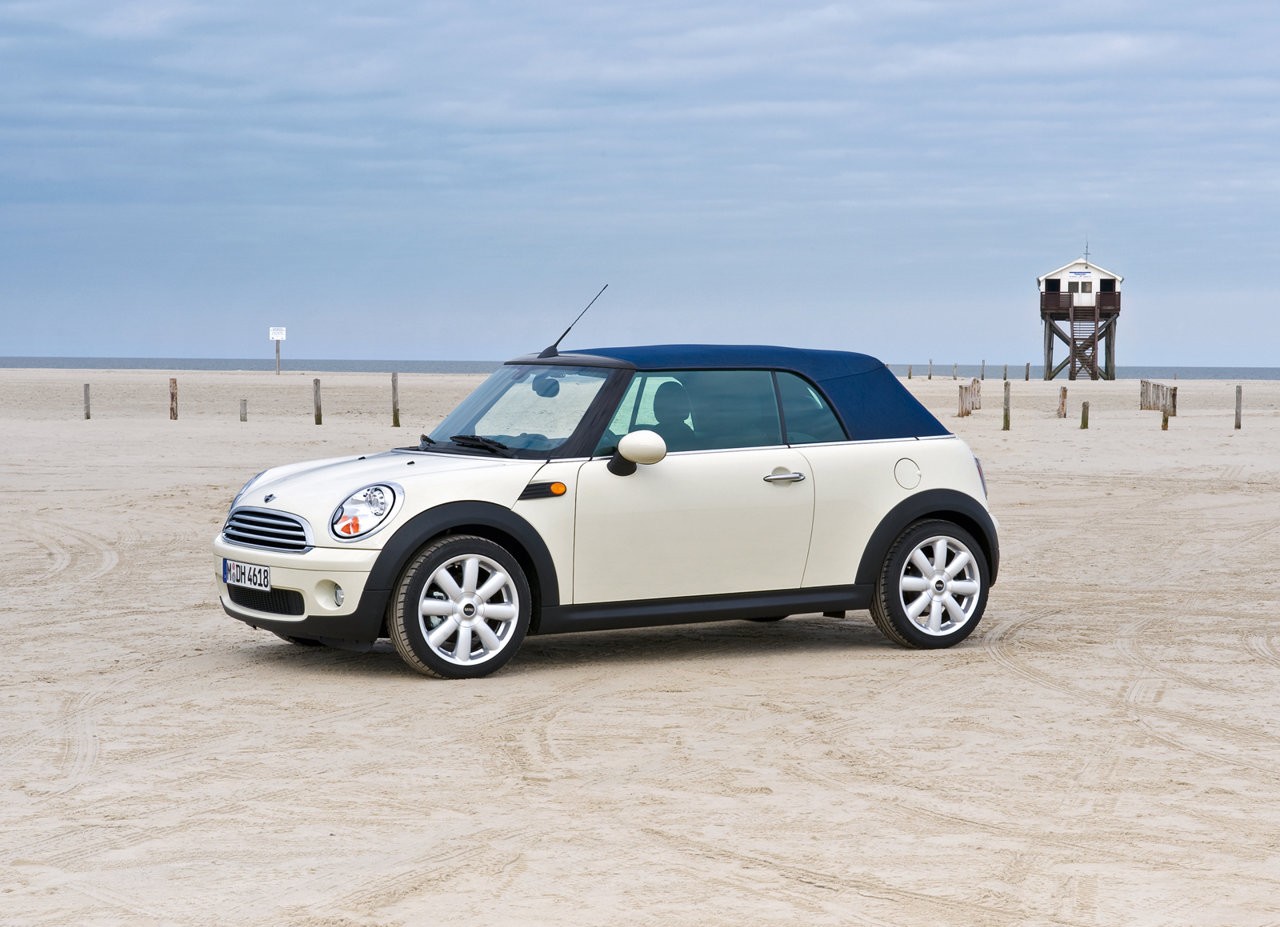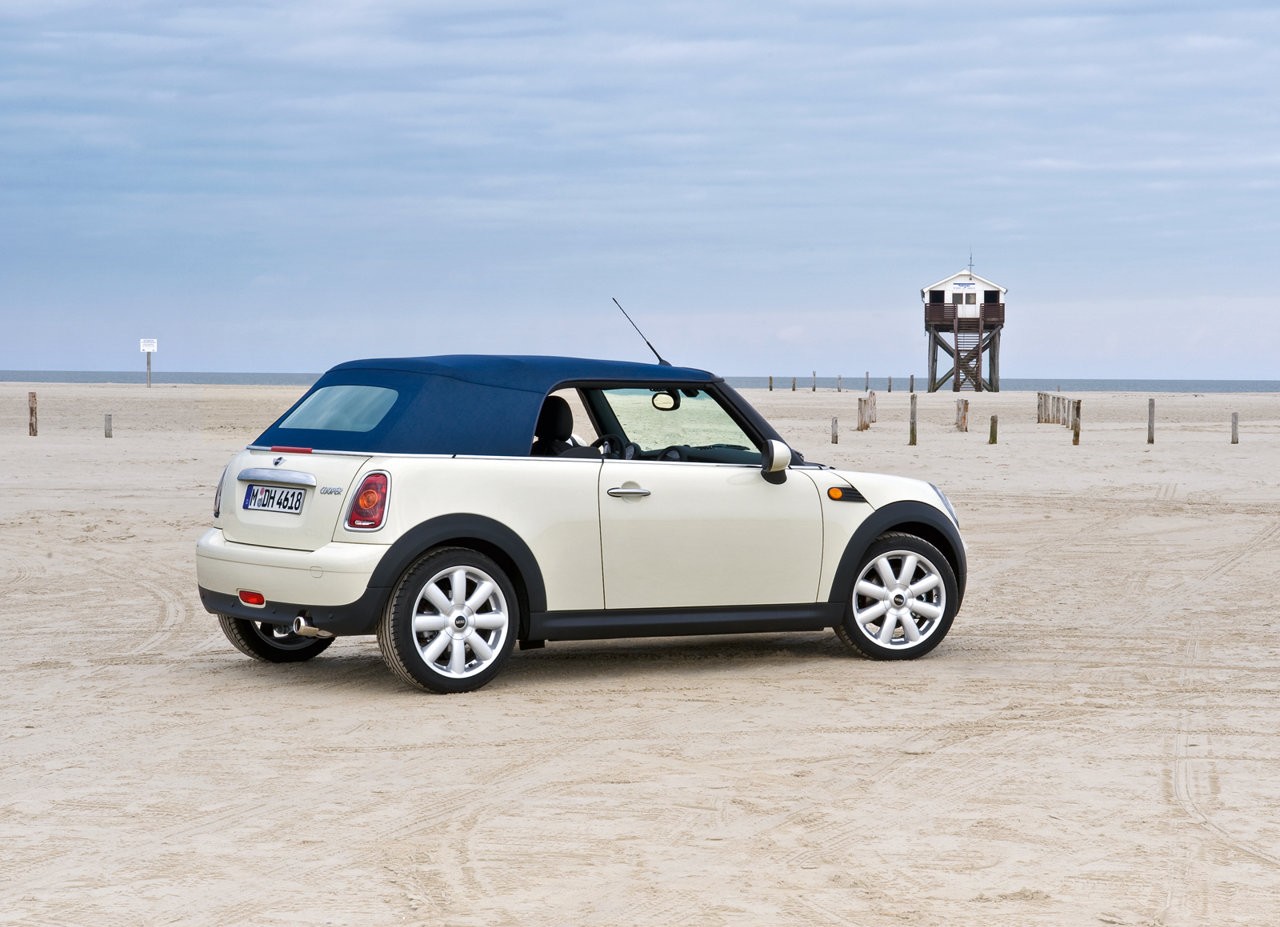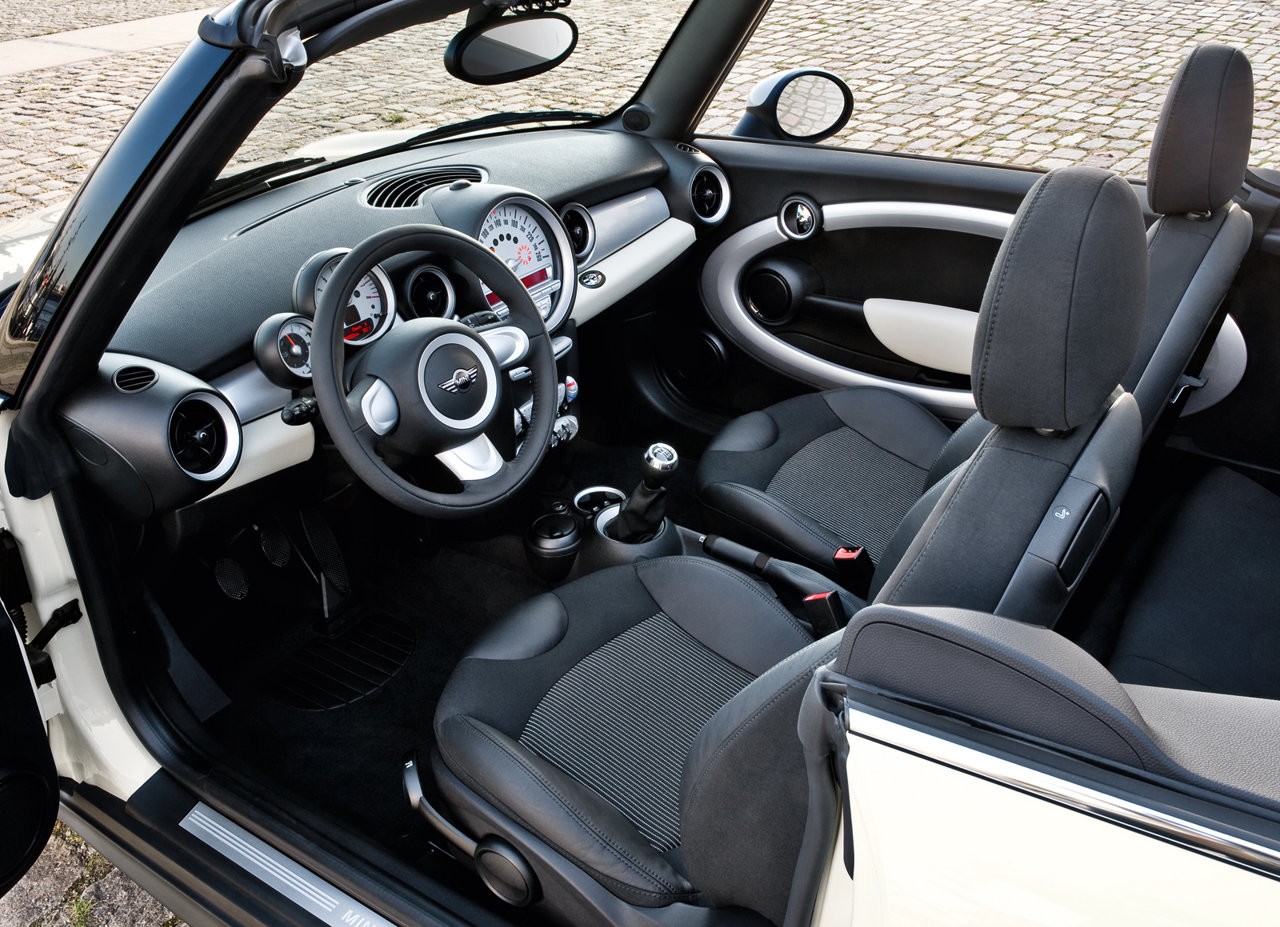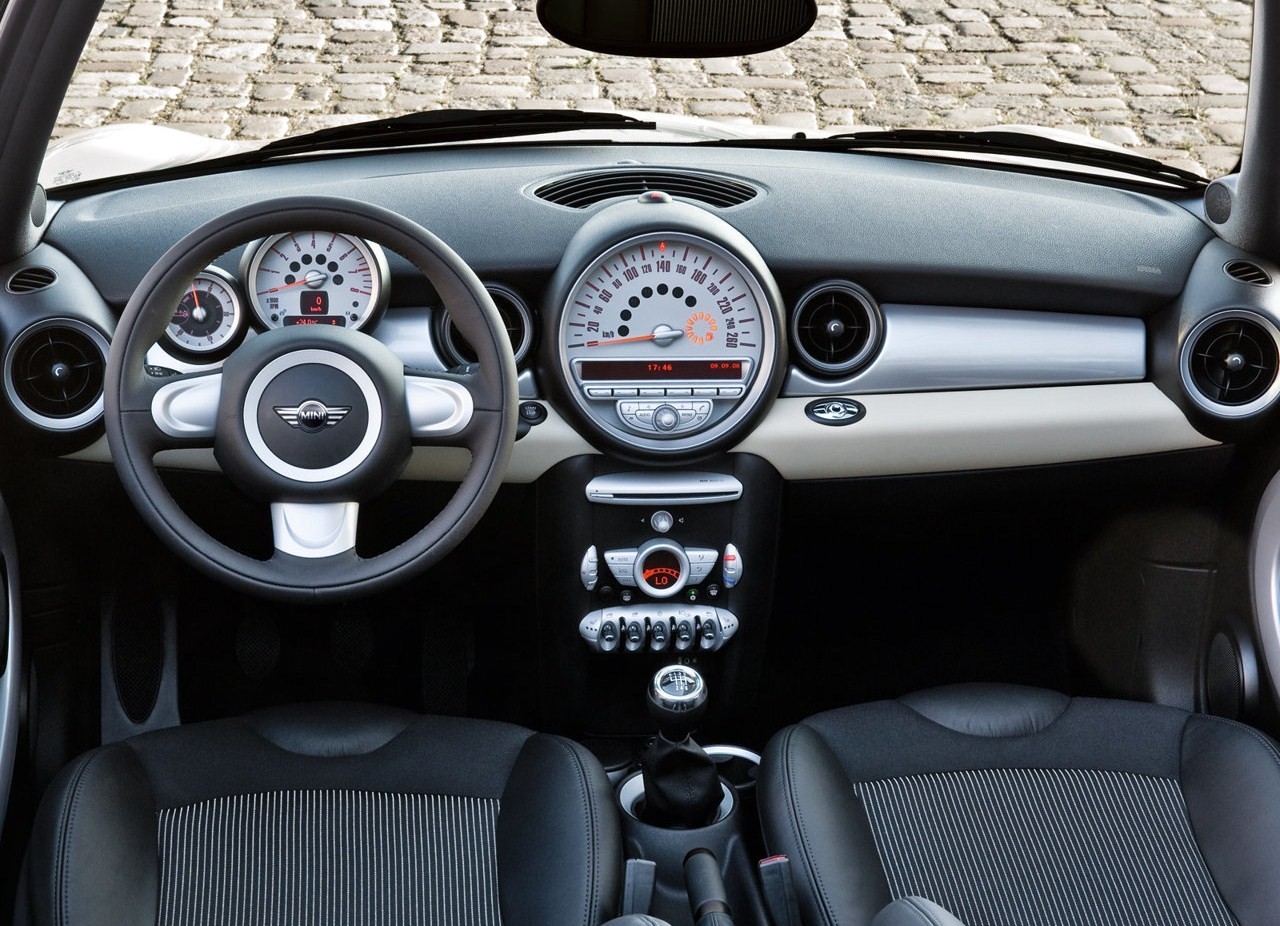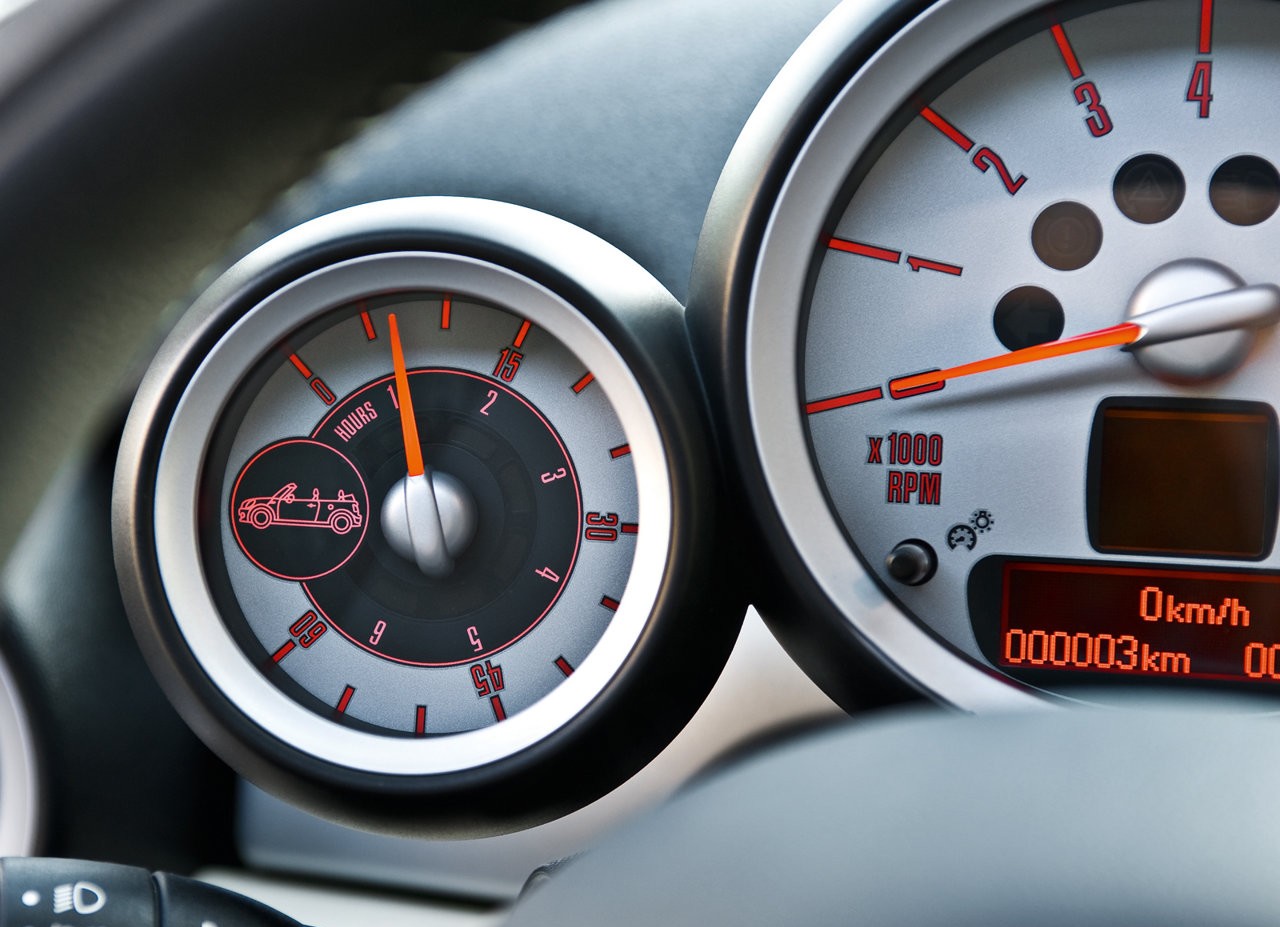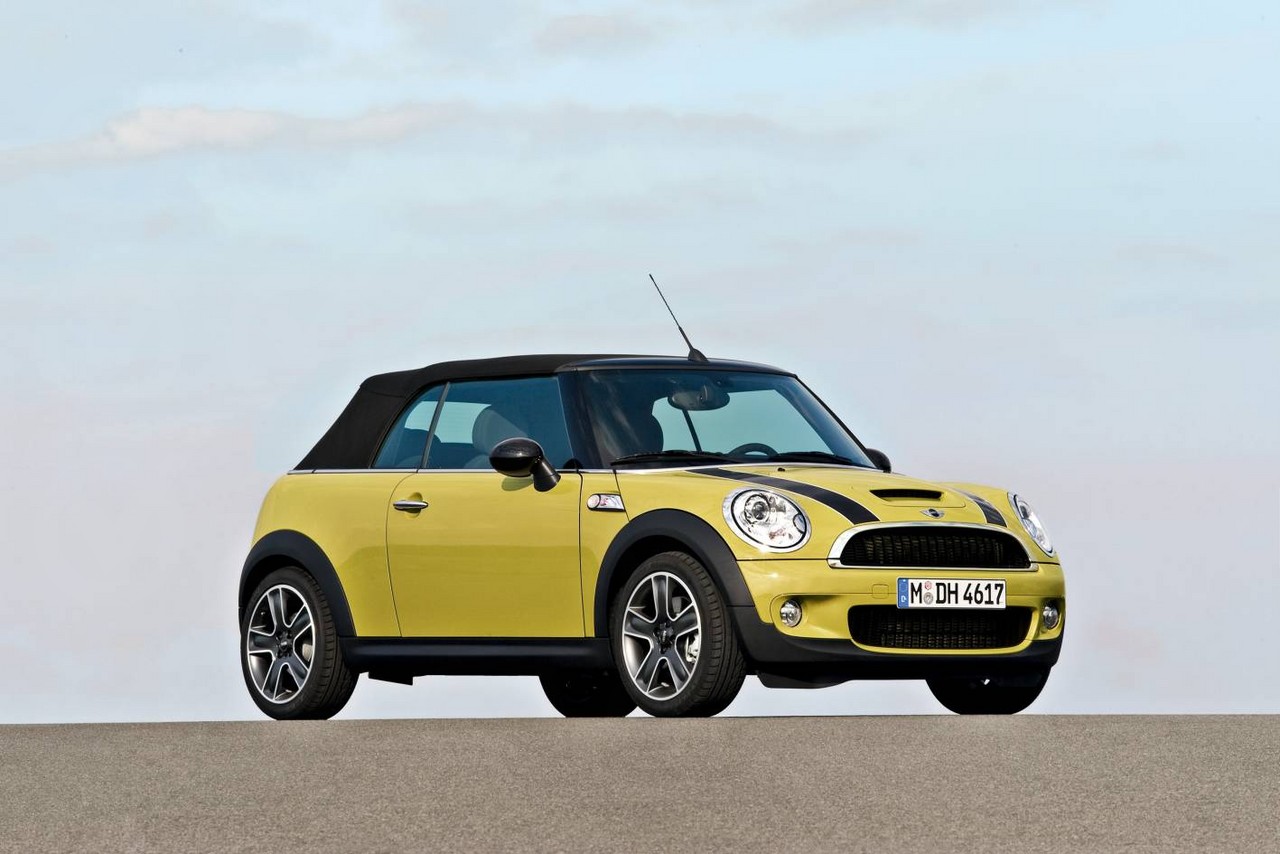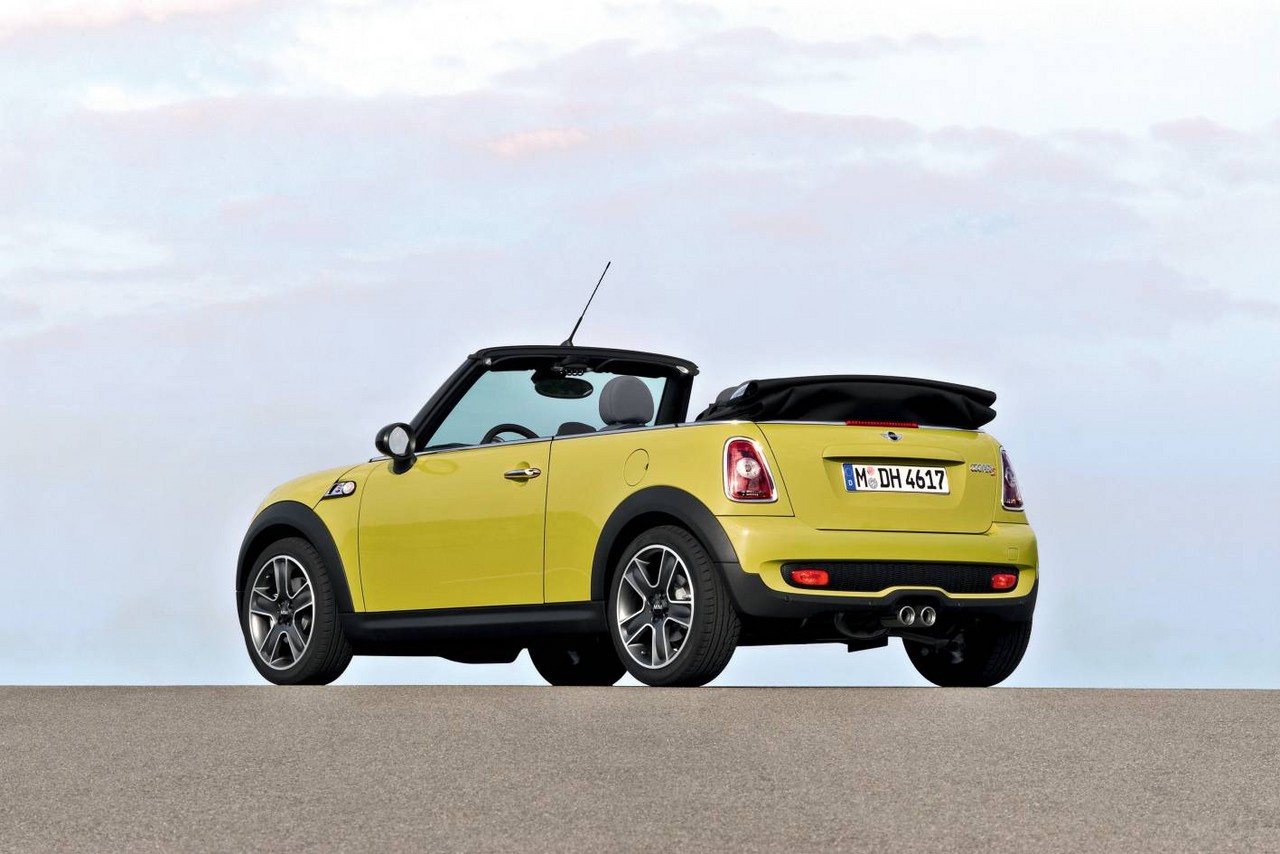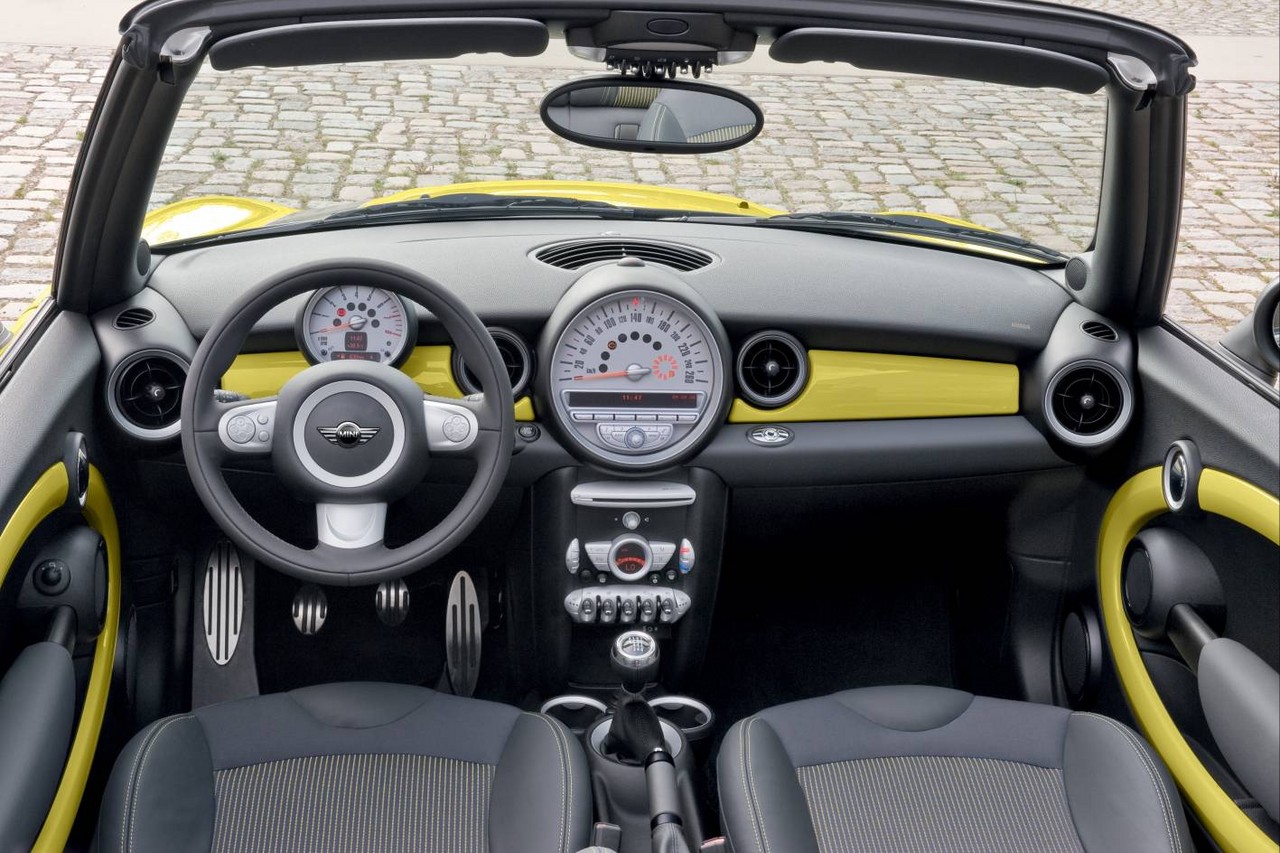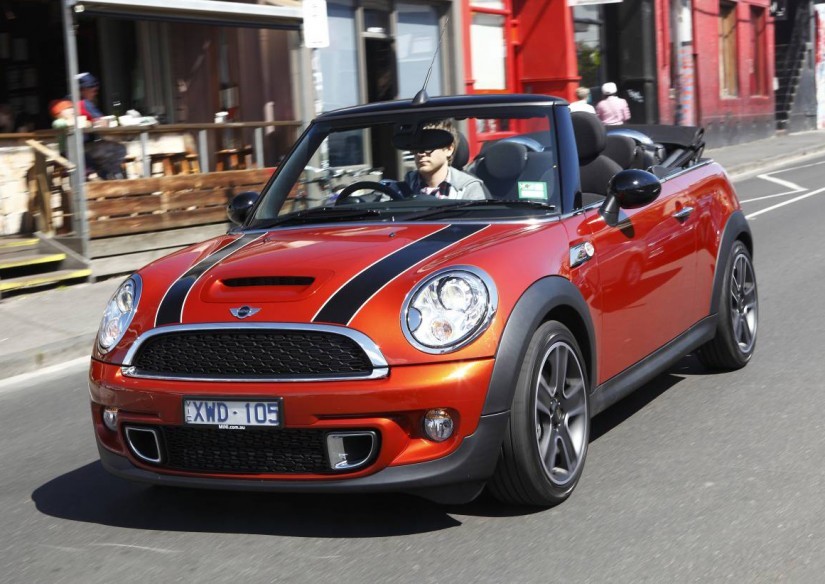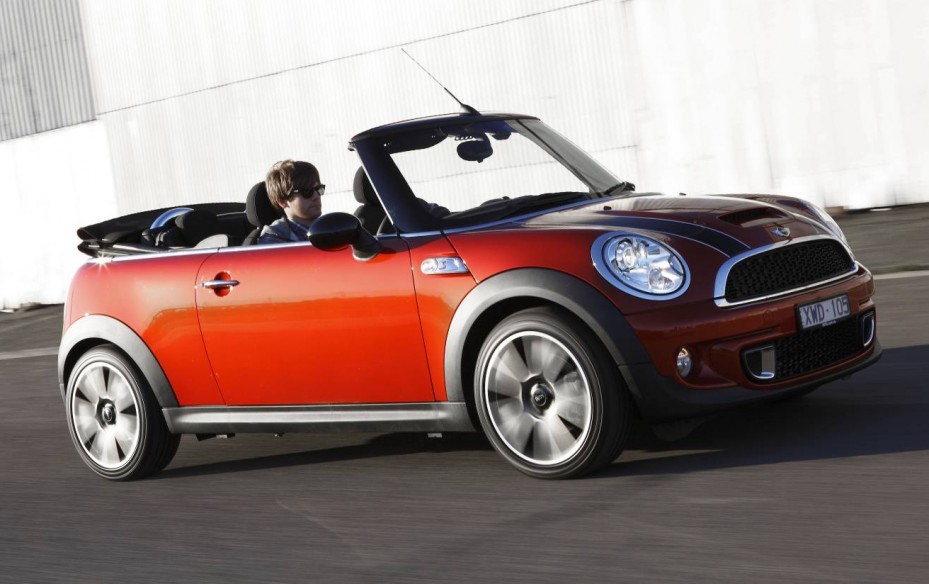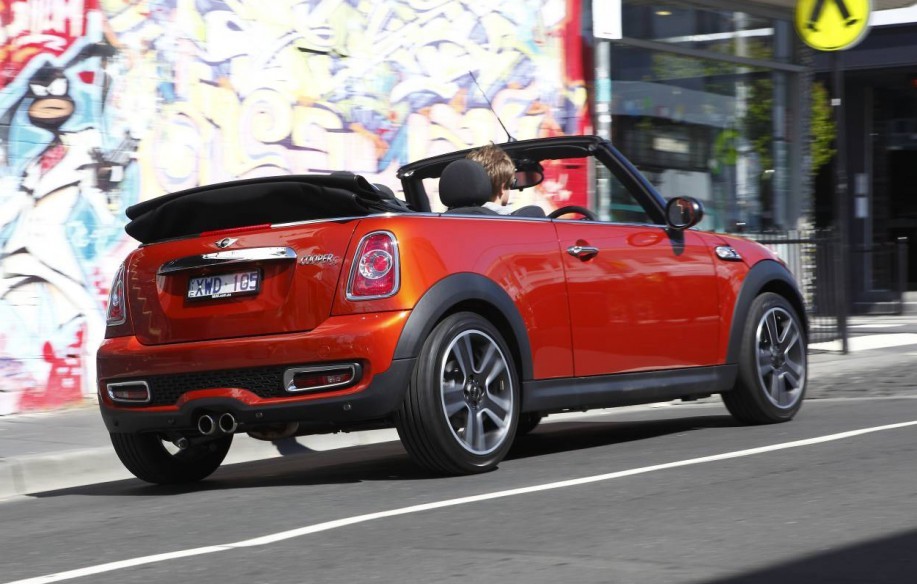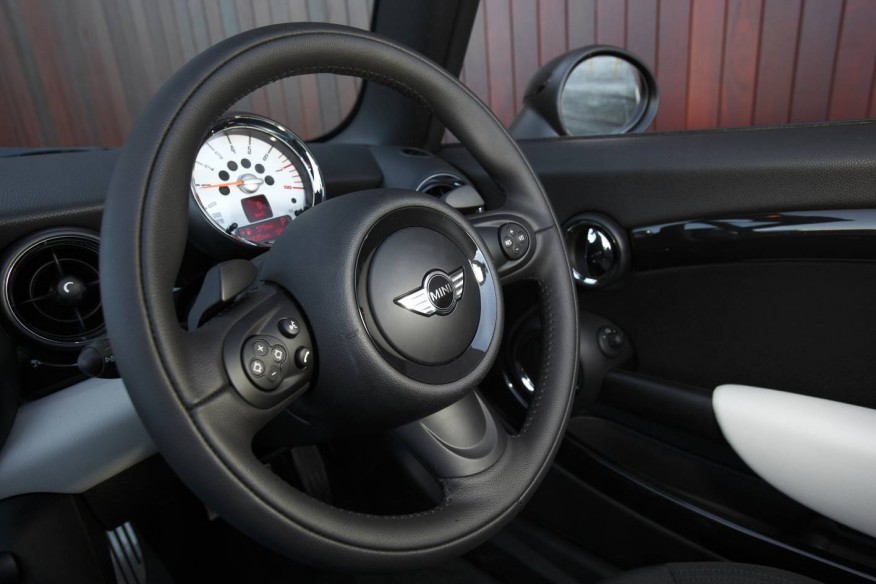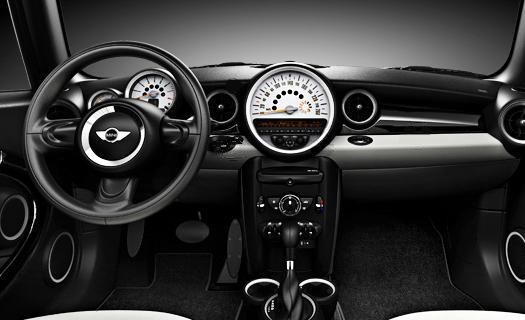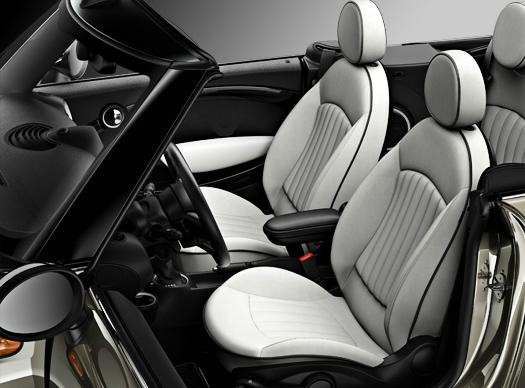
- For Cooper S and JCW, responsive turbocharged petrol engines
- Refined manual transmissions
- Capable dynamics
- Accurate, well-weighted steering
- Suspension lacks compliance
- Body flex and shake over uneven surfaces
- Soft-top roof lacks insulation
- Cramped rear seat
- Petrol engines susceptible to premature timing chain tensioner wear
Review: Mini R57.I Cabrio (2009-10)
Overview
Released in March 2009, the Mini R57 Series I (R57.II) Cabrio was a four-seat convertible with a power-operated, soft-top roof. Manufactured in Cowley, England, the front-wheel drive R57 Cabrio range consisted of Cooper, Cooper S and John Cooper Works variants.
Engines
Of the engines,
- the Cooper variant had a naturally aspirated, 1.6-litre ‘Prince’ engine which had a cast aluminium cylinder block, double overhead camshafts, four valves per cylinder, variable intake valve lift (based on BMW’s ‘Valvetronic’) and a compression ratio of 11.0:1;
- The Cooper S engine added a twin-scroll turbocharger (with boost pressure limited to 0.8 bar), common-rail direct injection, infinite intake camshaft adjustment, sodium-filled outlet valves (for greater cooling) and the compression ratio was lowered to 10.5:1; and,
- The John Cooper Works engine increased boost pressure to 1.2 bar, had a stronger cylinder head and valves, a modified air intake, free-flowing exhaust and a compression ratio of 10.0:1.
Transmission options consisted of six-speed manual and automatic units (see table below).
Dimensions
Compared to the MINI R52 Cabrio , the R57 Cabrio was 64 mm longer (at 3699 mm), 5 mm narrower (1683 mm) and 1 mm lower (1414 mm), though wheelbase length (2467 mm) was unchanged. Although similarly styled to its predecessor, the R57 Cabrio was longer and had a pop-up rollbar which replaced the R52 Cabrio’s fixed hoops.
Suspension and steering
The Mini R57 Cabrio’s front suspension consisted of a single-joint MacPherson spring strut axle, while the rear Z-axle had longitudinal struts with centrally-pivoted control arms; the R57 Cabrio also had an electric power steering system.
| Variant | Engine | Trans. | Peak power | Peak torque |
|---|---|---|---|---|
| Cooper | 1.6-litre petrol I4 | 6sp man., 6sp auto |
88 kW at 6000 rpm | 160 Nm at 4250 rpm |
| Cooper S | 1.6-litre turbo petrol I4 | 6sp man., 6sp auto |
128 kW at 5500 rpm | 240 Nm at 1600-5000 rpm |
| John Cooper Works | 1.6-litre turbo petrol I4 | 6sp man. | 155 kW at 6000 rpm | 260 Nm at 1850-5600 rpm (280 Nm at 2000-5300 rpm with Overboost) |
Safety equipment
Standard safety equipment for the Mini R57 Cabrio included dual front airbags, front seat-mounted side head/thorax airbags, ABS, electronic brake force distribution, brake assist, electronic stability control with cornering brake control, traction control, an automatically deploying roll bar and front seatbelts with pretensioners and load limiters.
Features: Cooper and Cooper S
Standard features for the Mini Cooper Cabrio included 15-inch alloy wheels, a six speaker sound system with CD player, MP3 compatibility and USB inputs, air conditioning, rear fog lights, cruise control, rear parking sensors, split and folding rear seats, a multi-function steering wheel, remote central locking, power windows and mirrors, ambient lighting, height adjustable front seats, tinted windows, a tilt and reach adjustable steering column, tyre pressure monitoring and an immobiliser.
The Cooper S was further equipped with 16-inch alloy wheels and contoured sports seats.
Mini John Cooper Works Cabrio
The John Cooper Works variant was differentiated by its 17-inch alloy wheels, climate control air conditioning, bi-xenon headlights and combination cloth/leather seats. The John Cooper Works variant was also fitted with four-piston front brake calipers and a front electronic differential lock which could brake a spinning wheel to transfer torque to the opposing front wheel.
Cooper Chilli and Cooper Chilli S
The Cooper and Cooper S were also available in Chilli editions. Compared to the Cooper Cabrio, the Chilli edition added a ten speaker sound system, front fog lights and contoured front sports seats with combination cloth/leather trim. The Cooper S Chilli was further differentiated by its 17-inch alloy wheels, climate control air conditioning and bi-xenon headlights.
Related links
Review: Mini R57.II Cabrio (2010-15)
Overview
Released in October 2010, the R57 Series II (R57.II) Cabrio range introduced additional standard features and a subtle facelift; the range itself, however, was unchanged. Visually, the R57.II Cabrio could be identified by its revised headlights and side indicators, new front bumper with lower air intake and larger deformation zones (for improved pedestrian safety), restyled front and rear fog lights, revised rear bumper and LED tail-light clusters.
The newly introduced LED brake lights varied in intensity with brake pressure and would display a ‘pulsing’ effect for heavy braking. Inside, there was a redesigned steering wheel and new controls for the air conditioning and audio systems.
From August 2012, the John Cooper Works variant was available with a six-speed automatic transmission.
| Variant | Engine | Trans. | Peak power | Peak torque |
|---|---|---|---|---|
| Cooper | 1.6-litre petrol I4 | 6sp man., 6sp auto |
88 kW at 6000 rpm | 160 Nm at 4250 rpm |
| Cooper S | 1.6-litre turbo petrol I4 | 6sp man., 6sp auto |
128 kW at 5500 rpm | 240 Nm at 1600-5000 rpm |
| John Cooper Works | 1.6-litre turbo petrol I4 | 6sp man., 6sp auto (2012) |
155 kW at 6000 rpm | 260 Nm at 1850-5600 rpm (280 Nm at 2000-5300 rpm with Overboost) |
Features
Compared to its R57.I predecessor, standard features for the R57.II Cabrio were extended to include a USB audio interface, Bluetooth hands-free telephony, automatic headlights, rain-sensing wipers, heated door mirrors and headlight washer jets.
Specifications
- Specifications: MINI R57 Cabrio (March 2012)
- Specifications: MINI R57 Cabrio (November 2013)
- Specifications: Mini John Cooper Works – Clubman, Cabrio, Coupe, Roadster, Countryman and Paceman (September 2013)
Related links
